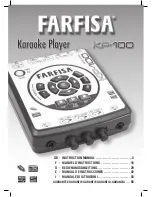
If the temperature in the installation environment is expected to exceed
+40°C, the temperature tolerance of the supply voltage and relay
connection cable must be at least +80°C. Otherwise, any cable that meets
the applicable electrical regulations can be used as the supply voltage and
relay connection cable.
Due to the overvoltage protection, the protective earth wire (PE) must be
connected to the supply voltage connector (see Section Connections).
The internal temperature of the device can be 10°C higher than the
ambient temperature. This must be taken into account in the cabling of the
device.
The voltage connected to the contacts of both relays must be in the same
voltage class (ELV/LV), considering the maximum values listed in the
technical specifications.
The idOil control unit must not be installed in potentially explosive areas,
but a sensor connected to it may be installed in potentially explosive
atmospheres of zones 0, 1 and 2.
In potentially explosive area installations, the national regulations and
appropriate standards IEC/EN 60079-25 Intrinsically safe electrical
systems “i” and/or IEC/EN 60079-14 Explosive atmospheres - Electrical
installations design, selection and erection must all be followed.
If it is possible that static electricity can cause hazards in the
measurement environment, equipotential bonding must be attended
according to the regulations concerning potentially explosive
atmospheres. Equipotential bonding is done by connecting all conductive
parts to the same potential e.g. in a junction box. Equipotential bonding
system must be grounded.
The instructions concerning the inspection and maintenance of Ex
equipment contained in the standards IEC/EN 60079-17 and IEC/EN
60079-19 should be observed when executing service, inspection or
repair procedures in potentially explosive atmospheres.
See Technical specifications; Connection values and Appendix A System
diagram.
2.5.
Repair
The device may not be repaired or modified without the manufacturer’s permission. If the
device exhibits a fault, it must be delivered to the manufacturer and replaced with a new
device or one repaired by the manufacturer.
2.6.
Decommissioning and disposal
The device must be decommissioned and disposed of in compliance with local laws and
regulations.
Installation and Operating Instructions | idOil-D30
6/51
DOC001602-EN-4







































